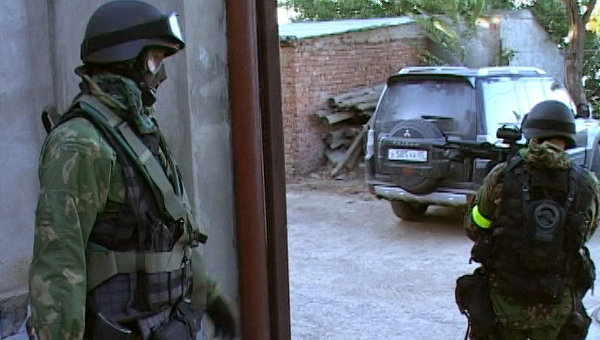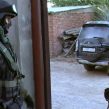
Militants or Civil Dissidents: Who are Moscow’s Key Enemies in Kabardino-Balkaria?
Publication: Eurasia Daily Monitor Volume: 8 Issue: 101
By:

On May 22, the Russian security services killed one of the leaders of the Kabardino-Balkarian insurgency, Buzhigit Khadzhiev (aka “Musa, the emir of the northwestern front”). Magomed Zalikhanov, dubbed by the law enforcement agencies as an active supporter of the rebels, was also killed in the same incident. According to the official version of events, the two militants opened fire on police who stopped their car and were killed by return fire. The police promptly discovered that Zalikhanov had owned a semi-constructed motel near the Baksan-Azau highway. When investigators searched the building, they found “suspicious devices connected to each other with wires resembling home-made explosive devices” and blew up the motel (www.kavkaz-uzel.ru, May 23).
The rebel source website islamdin.com, however, contested the official version of events, saying that the two rebels were “trapped.” The website also expressed skepticism about explosive devices set up at Zalikhanov’s motel that allegedly led the police to destroy Zalikhanov’s property (www.islamdin.com, May 23).
A new, more brutal counter-insurgency tactic seems to be taking hold in Kabardino-Balkaria. It involves not simply killing the rebels, but also destroying their houses and other property, thereby inflicting a maximum material loss on the remaining family. This is a form of collective punishment designed to make families and clans more active in restraining radicals from among their own. This new approach to fighting the insurgents appeared in Kabardino-Balkaria only recently (EDM, March 7). Yet, Chechen leader Ramzan Kadyrov had previously used this tool extensively and with a degree of success in Chechnya. This tactic, therefore, raises the conflict in Kabardino-Balkaria to a higher level, placing it on a par with war-ravaged Chechnya.
On May 17, the North Caucasian rebel leader Doku Umarov said in an interview with the insurgent Kavkaz Center website that the losses among the rebel forces would not prevent new attacks. Umarov claimed that the insurgency “could not accept all the people willing to join it,” implying that the insurgents remain highly popular among the regional youth. Still, Umarov admitted the rebels had to change their plans and tactics in the face of manpower losses, but reiterated that the casualties had not weakened the rebel forces. The North Caucasian mujahideen, in Umarov’s words, did not wish to be separated from their Muslim brothers in other Russian regions as in the past, but rather unite with them “to defeat Moscow” (www.kavkazcenter.com, May 17). Meanwhile, the director of the Federal Security Service (FSB), Aleksandr Bortnikov, made a sensational statement, saying that the Russian security services “know the whereabouts of Doku Umarov and are undertaking the necessary steps to detain him.” The FSB has proclaimed the rebel leader’s death on numerous occasions, most recently in March 2011, when a Russian military plane dropped a powerful bomb on a group of insurgents in Ingushetia (www.gazeta.ru, May 24).
Umarov’s universalist rhetoric should not be overestimated. Even within the North Caucasus itself, let alone all of Russia, the traditional way of life includes specific ethnic allegiances. Kabardino-Balkaria is not an exception. Many of the rebels killed in the past few weeks in the republic were ethnic Balkars, including the leaders of the insurgency, Asker Jappuev and Kazbek Tashuev, who were among top rebels killed on April 29. The two rebel leaders killed on May 22, Khadzhiev and Zalikhanov, were also ethnic Balkars. The Balkar leaders of the Kabardino-Balkarian insurgency seem to be experiencing a high rate of attrition. Whether it is a coincidence or a reflection of a muted conflict between the Kabardins (aka Circassians) and the Balkars is uncertain, but ethnicity is certainly a key factor in this multi-ethnic republic, as well as in other republics of the North Caucasus. The jamaat in Kabardino-Balkaria has shown few signs of recovery since the killing of its leaders in April, but while it will probably take it some time to regroup, the jamaat will probably regain strength rather than die out give that its social base is estimated to include tens of thousands of people.
In light of the Georgian parliament’s recent recognition of the “Circassian genocide,” it is projected that the Circassian nationalist forces also will step up their activities. On May 22, the Circassian Congress organization issued a special statement following the Georgian parliament’s decision. The statement concluded: “The fact that the Circassian rebirth after the Russian-Circassian war [of the 19th Century] started in Georgia will remain forever in the history of Circassia” (www.elot.ru, May 23).
The big question now is who ultimately will hold sway over local politics in Kabardino-Balkaria—the Circassian nationalists or the rebel forces? The Circassian nationalists have received a powerful boost with Georgia’s recognition of the Circassian genocide. In the run up to the Sochi Olympics in 2014, the Circassians will become increasingly vocal and more prone to public protest actions. At the same time, the rebels have proven to be a much more successful force in uniting people around their goals, spoiling government plans for developing tourism in Kabardino-Balkaria and even threatening the overall stability of the local government. Moscow has traditionally been very successful in the North Caucasus, including Kabardino-Balkaria, in suppressing secular political dissidents, but so far its efforts to defeat the militant underground have failed decisively and even backfired, expanding the zone of instability. In the past, Moscow could afford to fight both of these forces. But with the expansion of the threat from the rebels and an increase in Circassian nationalism, Moscow will likely be forced to choose sides, which makes the prospects of the Circassian activists more favorable than in previous years.




